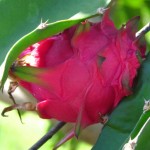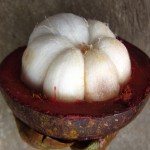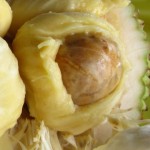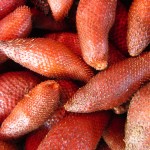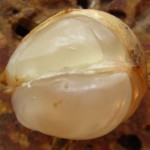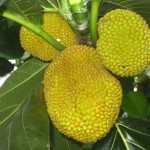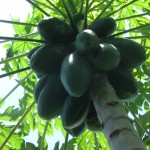Flora and Fauna of Tropical Asia
The fascinating world of tropical nature
Fire Dragon Fruit
One of the more unusual fruits one often comes across while travelling through tropical Asia is the dragon fruit (Hylocereus undatus). This attractive-looking produce grows on a vine belonging to the Cactaceae family which seems somewhat out of place in the lush tropical vegetation of south-east Asia. Indeed, the plant originates in central America where it is known as “pitahaya”. The fact that it has been cultivated so successfully in many parts of Asia (including Cambodia, Indonesia, Malaysia, the Philippines, Sri Lanka, Vietnam, Thailand and Taiwan) shows its remarkable ability to survive in extreme conditions – from dry… Continue reading
Mangosteen – World’s Best Fruit?
In “Exploring for plants”, a 1930 book written by American botanist David G. Fairchild, the author calls the mangosteen (Garcinia mangostana) “queen of tropical fruits”. This reference undoubtedly hints at the fruit’s excellent taste, but perhaps it also attempts to proliferate the (often quoted but unproven claim) that England’s Queen Victoria was particularly fond of this exotic fruit and even offered a large reward to anybody who could procure it for her. Many of the early explorers and botanists who tasted mangosteen gave it superb references. As an example, English explorer Frederick William Burbidge expressed the taste as… Continue reading
Tasting Cempedak
Another interesting fruit found in many parts of south-east Asia is cempedak (Artocarpus integer). The first time I noticed it in the markets of central Cambodia I thought the vendors were selling breadfruit, but later I started wondering whether it was some sort of a mini jackfruit or even a small durian. As it turned out, it was none of the three. Although related to jackfruit and breadfruit — all three belong to the Moracea family characterised by large stately trees that can reach up to 20 metres (in contrast, durian is a member of the Malvaceae… Continue reading
Salak – the Snake Skin Fruit
Continuing on the journey of discovery of exotic fruits here in Cambodia, today I’d like to present salak (Salacca zalacca). A product of a palm tree, salak belongs to the category of really unusual foods, normally found in traditional markets only. It won’t be to everybody’s palate – its strong, somewhat sweet but mostly sour taste would probably make many people frown, but others might find the exotic experience pleasantly invigorating. The flesh of the fruit isn’t particularly attractive; unlike the pure white flesh of rambutan or mangosteen, salak, with its dirty-looking yellow to brown patches, might be… Continue reading
Introducing Langsat
The tropical world is home to an incredible variety of unusual and tasty fruits, many of which are completely unknown outside of their natural location. One of them is langsat (Lansium domesticum), a delicious product of a tree from the Mahogany family that I discovered a couple of days ago here in Cambodia. At first sight the little fruits resemble small potatoes, but below the thin skin are white translucent segments that easily separate from each other. They might contain a seed or two, although I understand that the langsat produced by commercial farming is of cultivated… Continue reading
Introducing Breadfruit
Once upon a time breadfruit (Artocarpus altilis) was the staple diet of many island nations in Polynesia and other parts of the vast South Pacific region. There was even a saying in Tahiti that the very first thing one should do after building a house is to plant a breadfruit tree (or an “uru” as they call it in that part of the world) – that way there will always be food to put on the table. This strong, stately tree can reach over 25 metres in height and the largest specimen may produce as many as 200… Continue reading
The Magnificent Papaya
If you had to pick a tree that best represented the tropics, which one would it be? While there are a number of candidates for the likely symbol of the hot and humid regions, I would probably rate the papaya tree (Carica papaya) near the top. Its long branches stretching horizontally from the crown, the large green to yellow fruits hanging down graciously from the trunk, and the distinctive shape of their leaves give an unusual impression that will enthuse any nature-conscious visitor of the warm climates. This is a tree that is as common and widespread… Continue reading
